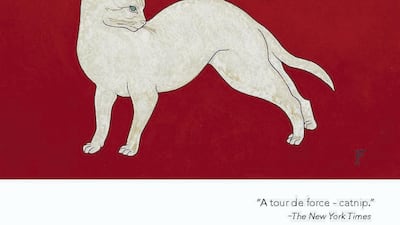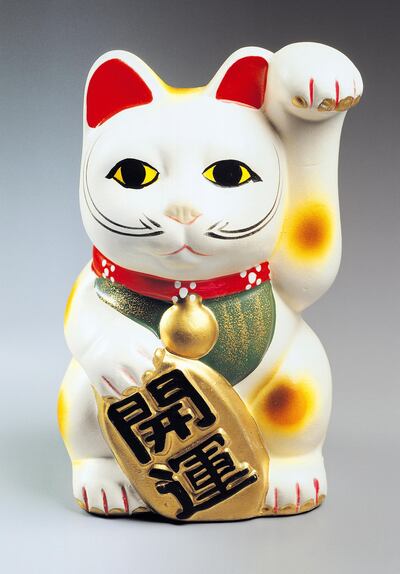We all know that cats are supposed to have nine lives, well, in Junichiro Tanizaki's novella A Cat, A Man, and Two Women, the titular feline takes on something of a new identity in each of her relationships with the humans around her.
The book begins with a letter by one of the two women to another. Shinako – who until recently was married to Shozo – is imploring Shozo's new wife, Fukuko (whom he left Shinako for), to give her Lily the cat.
“I gave you the man who meant more to me than life itself! And not only that – I gave you everything from that happy household we’d built together as a couple,” Shinako reminds the woman who’s living the life Shinako built for herself. “I won’t make any other unreasonable demands,” she promises. “I’ve put up with everything – I’ve been beaten up, knocked down, and trampled on. Considering all I’ve sacrificed, is it too much to ask for one little cat in return? To you it’s just a worthless little animal, but what a consolation it would be to me!”
Each of the three central (human) characters in the story – Shinako, Fukuko and Shozo – use Lily as a pawn in the games they're playing but it's the cat herself who has the last laugh as it's slowly revealed just how much she means to both Shozo and Shinako.
Indeed, it is through their relationships with Lily, rather than with one another, that Tanizaki breathes life into his characters. Here he’s a wonderfully playful writer, but crafty too. When Shozo expresses his fear’s that his ex-wife is using Lily like a “tool” in a plot he suspects her of hatching to try to win him back, or when Shinako warns Fukuko not to underestimate Lily’s importance – “Don’t think ‘Oh, it’s just a cat,’ or you may find yourself losing out to it in the end” – Tanizaki is winking at the reader. Of course he’s using the cat to further his plot, but equally so, don’t dismiss her significance.
One doesn't need to be a cat lover to appreciate the tale, but feline fanciers will delight in Tanizaki's understanding of their whiskery wiles. Shozo – who initially comes across as rather one-dimensional, easily manipulated by his meddling mother, O-rin (a woman known for her "shrewdness," especially when it comes to encouraging him to leave Shinako for Fukuko, who brings with her a much needed dowry), and not very attentive to either of his wives – saves his real emotion for Lily, especially after he loses her, "never had his desire to see her or meet her", he says speaking of Fukuko, "been anything like as intense as his feelings for Lily were now."
It's in his relationship with his cat that we see the true depths of his emotions: "When he heard people with no knowledge of a cat's character saying that cats were not as loving as dogs, that they were sold and selfish, he always thought to himself how impossible it was to understand the charm and lovableness of a cat if one had not, like him, spent many years living alone with one." Originally Lily was Shozo's cat – they lived together before he married Shinako, and she wasn't particularly impressed by the amount of attention her husband lavished on the pet. As such, her plea for Lily isn't quite as honest as she claims. But once Lily is handed over to her, Shinako begins to see what her ex saw in the animal.
There's a wonderful timeless quality to the novel. There are few specifics to identity the period – a reader will no doubt notice the absence of technology – and I'm presuming it's the 1930s, which is when the story was first published. Not that this matters as it's the inner lives of the protagonists that take centre stage. All the same, it's more instructive on the subject of Japanese society than one might initially think – Shozo's position in pride of place at the centre of the family unit, a host of women bowing to his needs; and the female plotting that needs to go on behind closed doors. The fact it's such a gentle, entertaining read makes it easy to not fully appreciate Tanizaki's dexterity. It's up there with the likes of Henry James' What Maisie Knew as a great custody battle narrative, which makes sense since both writers are interested in the flaws that eventually undo us all. Just because it's a cat and not a child who's being fought over doesn't in any way make for less affecting reading. To read this slip of a book is to see why Tanizaki is considered one of the greatest Japanese writers of the 20th century, none of his original elegance lost in Paul McCarthy's masterful translation.
_______________________
Read more:
Book review: A tale of the loneliness of the hunted in The Tiger and the Acrobat
Book review: Daniel Ellsberg discusses loose links in the US nuclear chain of command
Book review: Nicola Pugliese's Malacqua reflects the political unrest of the time
_______________________


